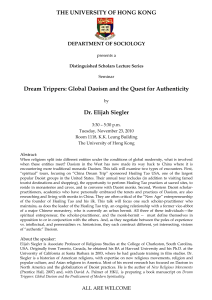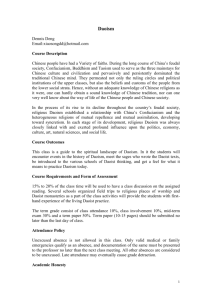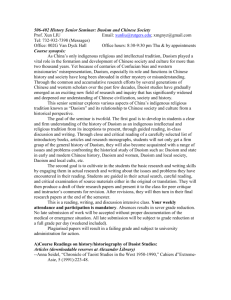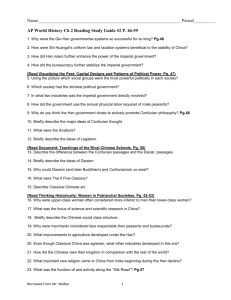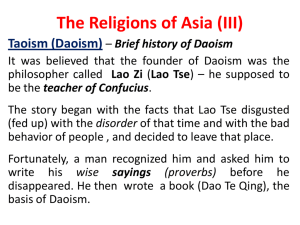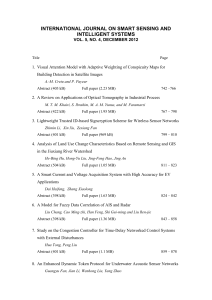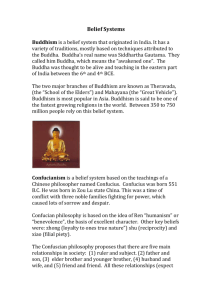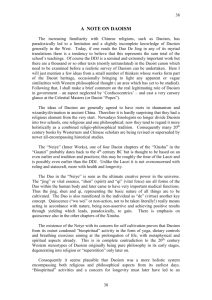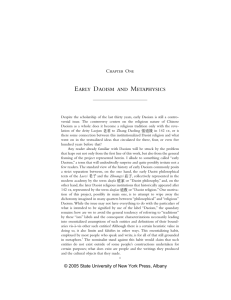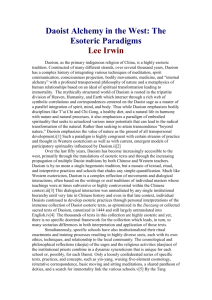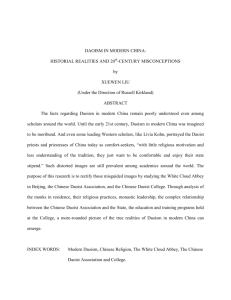Huangdi yinfu jing - Harrassowitz Verlag
advertisement
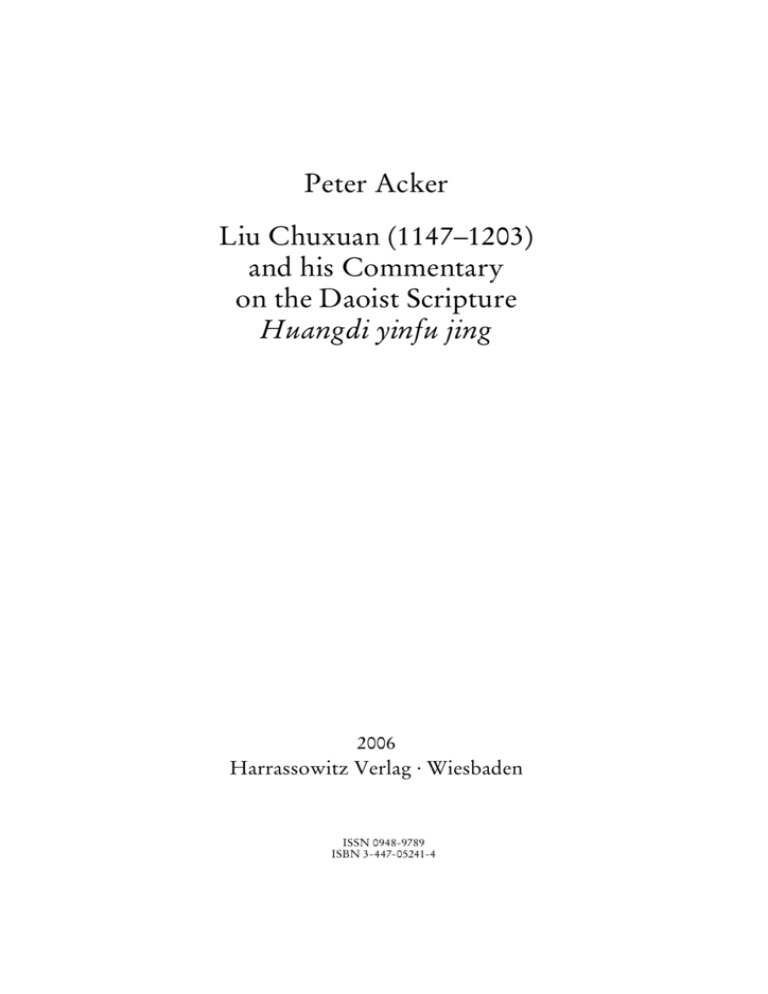
Peter Acker Liu Chuxuan (1147–1203) and his Commentary on the Daoist Scripture Huangdi yinfu jing 2006 Harrassowitz Verlag · Wiesbaden ISSN 0948-9789 ISBN 3-447-05241-4 Table of Contents Preface ................................................................................................................... 7 Introduction: Daoism in Contemporary China....................................................... 9 1. Political perspectives ..................................................................................... 9 2. Daoism and Chinese culture ......................................................................... 11 1: Inner Alchemy (neidan 內丹) ............................................................................ 1. The term inner alchemy ................................................................................. 2. The theory of reversion .................................................................................. 3. Practice: The three treasures and the restoration of primordial Yang-qi ........ 17 17 19 24 2: Liu Chuxuan and Early Quanzhen-Daoism ....................................................... 1. The emergence of early Quanzhen-Daoism ................................................... 2. Liu Chuxuan’s (1147 – 1203) encounter with Quanzhen .............................. 3. The nature of Quanzhen, its basic ideas and teachings .................................. 29 29 33 41 3: The Huangdi Yinfu Jing and its Significance in Quanzhen Daoism .................. 49 1. Authorship, date and basic content of the scripture ....................................... 49 2. The role of the classics and the significance of the Yinfu jing in early Quanzhen Daoism ................................................................................................. 54 4: Liu Chuxuan’s Commentary and his Theory of Self-Cultivation ...................... 1. Introduction.................................................................................................... 2. The Dao of Heaven and cosmological notions............................................... 3. The “three vehicles”: A narrative of self-cultivation ..................................... 59 59 61 67 Conclusion ............................................................................................................. 75 Commentary on The Yellow Emperor’s Scripture of the Hidden Contracts.......... 77 DZ 122 Huangdi yinfujing zhu ............................................................................. . 114 Bibliography .......................................................................................................... Abbreviations..................................................................................................... 1. Primary Sources from the Daoist Canon........................................................ 2. Other Chinese Sources................................................................................... 3. Secondary Literature in Chinese .................................................................... 4. Secondary Literature in Western Languages ................................................. 123 123 123 124 124 125 Preface In this study, I will present a complete and annotated translation of a commentary on the Daoist text Huangdi yinfu jing 黃帝陰符經(The Yellow Emperor’s Scripture of Hidden Contracts)1 written by the Quanzhen Daoist Liu Chuxuan 劉處玄 (11471203). The Yinfu jing is one of the most important Daoist scriptures with a great number of commentaries written by proponents of various Daoist schools still extant in the Daoist Canon today. Liu Chuxuan belongs to the ‚seven perfected’ (qizhen 七 真), the famous group of disciples of the founder of Quanzhen 全真 Daoism,2 Wang Chongyang. Quanzhen Daoism emerged in the Jin-dynasty, which the Jurchen established after they had successfully occupied most of northern China and forced the Chinese Song-dynasty to retreat to the south. Today, Quanzhen is –along with the Zhengyi Daoism of the celestial masters based in Taiwan – one of the two most important branches of Daoism in the Chinese world. Daoism is not a completely unknown religion in the West anymore. Due to years of arduous scholarship in both the West and in the East, translations of many Daoist scriptures are available even to a greater public in the west. However, our understanding of specific currents and aspects in religious Daoism is remains limited. With this study, I hope to contribute to a better understanding of the nature of religious Daoism. My study focuses on Liu Chuxuan’s commentary. However, the introduction discusses the significance of Daoism and especially the Quanzhen-school in contemporary Chinese society and culture. In the first chapter, I discuss the important Daoist context of inner alchemy (neidan 內丹) that provides the theoretical framework for Liu Chuxuan’s commentary and Quanzhen self-cultivation techniques and practices. In the second chapter, I give a historical overview of the emergence of Quanzhen Daoism during the Jin-dynasty. This chapter also includes biographical data on Liu Chuxuan available from the Daozang, the Daoist canon and a general discussion of the core concepts used in the teachings of early Quanzhen Daoism. The third chapter deals with the Yinfu jing, its history and significance in both Daoist 1 2 Hereafter, I use the abbreviated title Yinfu jing. Quanzhen can be translated as ‘ultimate reality’ or more literally as ‘all-true.’ Both translations are common in Western literature. However, because the Chinese word is wellknown in the academic world today, I do not give a translation here. 8 Preface and general Chinese intellectual history. I discuss the still unknown origins of the scripture and give a short overview of other important commentaries on it. In this chapter, I also analyze the controversial role of the classics and ‘book learning’ in early Quanzhen Daoism. The fourth chapter undertakes an interpretation of Liu Chuxuan’s commentary. Primarily focusing on general cosmological notions subsumed in the concept of the “Dao of Heaven” and his theory of self-cultivation, I also relate the thoughts expressed in Liu Chuxuan’s commentary to texts of other masters of early Quanzhen Daoism. I argue that Liu Chuxuan’s commentary is an interpretation of Daoist cosmology and theory of inner alchemy that is largely consistent with the thoughts of Wang Chongyang and his other disciples. At the same time however, it displays several features unique to his personality. Finally, the last and central part of this study is the complete and annotated translation of Liu Chuxuan’s commentary on the Yinfu jing.
